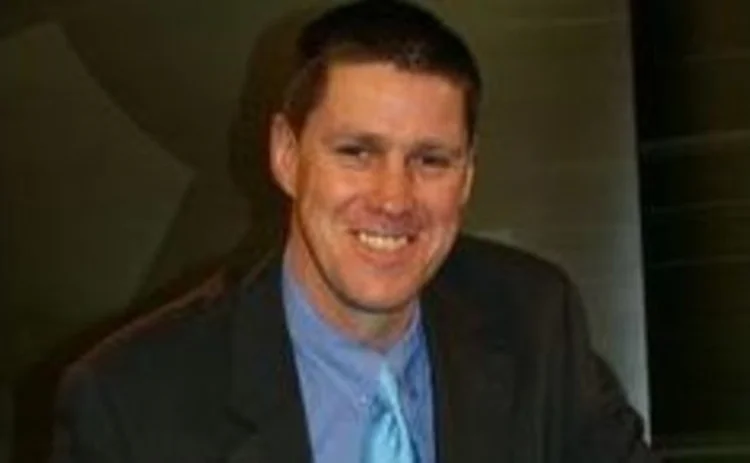December 2011: Time to Stop Chasing Rainbows

High-frequency trading seems to be everywhere right now. This month’s issue of Waters, the largest we’ve ever produced, is a case in point: We have the writeup of an HFT webcast we hosted recently, sponsored by Intel and Sybase; Sitanta Ni Mathghamhna’s feature delves into the nuts and bolts of measuring latency; and Rob Daly’s Japan feature and Jake Thomses’ Brazilian feature focus on what has become a crucial source of revenue for buy-side and sell-side firms in mature and, increasingly, emerging markets.
During the course of the webcast, Christian Sommer, director of capital markets marketing at Intel, explained that client demand is continuing to fuel the incessant drive toward shrinking latency, a trend that has yielded some startling developments over the last number of years. “We have seen a two-thousand-fold drop in average core-trading latency in the last three years, and I think the move to measure trading latency in picoseconds is nearing,” Sommer asserted. “We’re not there yet, but it’s in the not-too-distant future.”
For those of you not familiar with a picosecond, it’s one trillionth of a second, which, according to Wikipedia, can be articulated this way: A picosecond is to one second as one second is to 31,700 years. We are nowhere near that kind of territory at the moment, and certain commentators contend that it’s unlikely that as things stand, the financial services industry will ever need that kind of latency. Neil McGovern, senior director of strategy, financial services, at Sybase, didn’t contradict Sommer’s assessment, but rather chose to focus on the practicality of such infinitesimally small measures of time. “Light travels 30 centimeters in one nanosecond,” McGovern said. “So if light can go only a few centimeters in a picosecond, how much faster are you going to get? What are you going to be able to do in such a short space of time?”
McGovern’s point is difficult to counter, which got me thinking back to my teaching days and the conversations I allowed myself to get sidetracked into by some of my senior pupils. We often discussed the notions of contentment and happiness, and, while Deepak Chopra will no-doubt scoff at the banality of my advice, we most often concluded that we’re never likely to be content until such time as we acknowledge that what we have is enough and that we do not want or need more. I’ve argued along these lines before in this column, specifically with reference to reducing latency as a means of super-charging HFT environments, and this month is no different: Firms need to decide for themselves how fast is fast enough, because the rainbow-chasing scenario that many players have inadvertently become slaves to, is unsustainable.
Only users who have a paid subscription or are part of a corporate subscription are able to print or copy content.
To access these options, along with all other subscription benefits, please contact info@waterstechnology.com or view our subscription options here: http://subscriptions.waterstechnology.com/subscribe
You are currently unable to print this content. Please contact info@waterstechnology.com to find out more.
You are currently unable to copy this content. Please contact info@waterstechnology.com to find out more.
Copyright Infopro Digital Limited. All rights reserved.
As outlined in our terms and conditions, https://www.infopro-digital.com/terms-and-conditions/subscriptions/ (point 2.4), printing is limited to a single copy.
If you would like to purchase additional rights please email info@waterstechnology.com
Copyright Infopro Digital Limited. All rights reserved.
You may share this content using our article tools. As outlined in our terms and conditions, https://www.infopro-digital.com/terms-and-conditions/subscriptions/ (clause 2.4), an Authorised User may only make one copy of the materials for their own personal use. You must also comply with the restrictions in clause 2.5.
If you would like to purchase additional rights please email info@waterstechnology.com
More on Trading Tech
FCA sets up shop in US, asset managers collab, M&A heats up, and more
The Waters Cooler: Nasdaq and Bruce ATS partner for overnight market data, Osttra gets sold to KKR, and the SEC takes on DOGE in this week’s news roundup.
EMS vendors address FX options workflow bottlenecks
Volatility is driving more buy-side interest in automating exercises and allocations.
BNP Paribas explores GenAI for securities services business
The bank recently released a new web app for its client portal to modernize its tech stack.
Treasury selloff challenges back-office systems, datafeeds
FIS and Trading Technologies suffered downtime during peak activity.
Coming to America: Deutsche Börse targets US market using SimCorp One
Fresh from integrating SimCorp and rearranging its business lines, the German exchange has set American expansion as its goal for SimCorp’s buy-side offering.
Tariffs, data spikes, and having a ‘reasonable level of paranoia’
History doesn’t repeat itself, but it rhymes. Covid brought a “new normal” and a multitude of lessons that markets—and people—are still learning. New tariffs and global economic uncertainty mean it’s time to apply them, ready or not.
ICE eyes year-end launch for Treasury clearing service
Third entrant expects Q2 comment period for new access models that address ‘done-away’ accounting hurdle
MarketAxess, S&P partnership aims for greater transparency in fixed income
CP+, MarketAxess’s AI-powered pricing engine, will receive an influx of new datasets, while S&P Global Market Intelligence integrates the tool into its suite of bond-pricing solutions.








